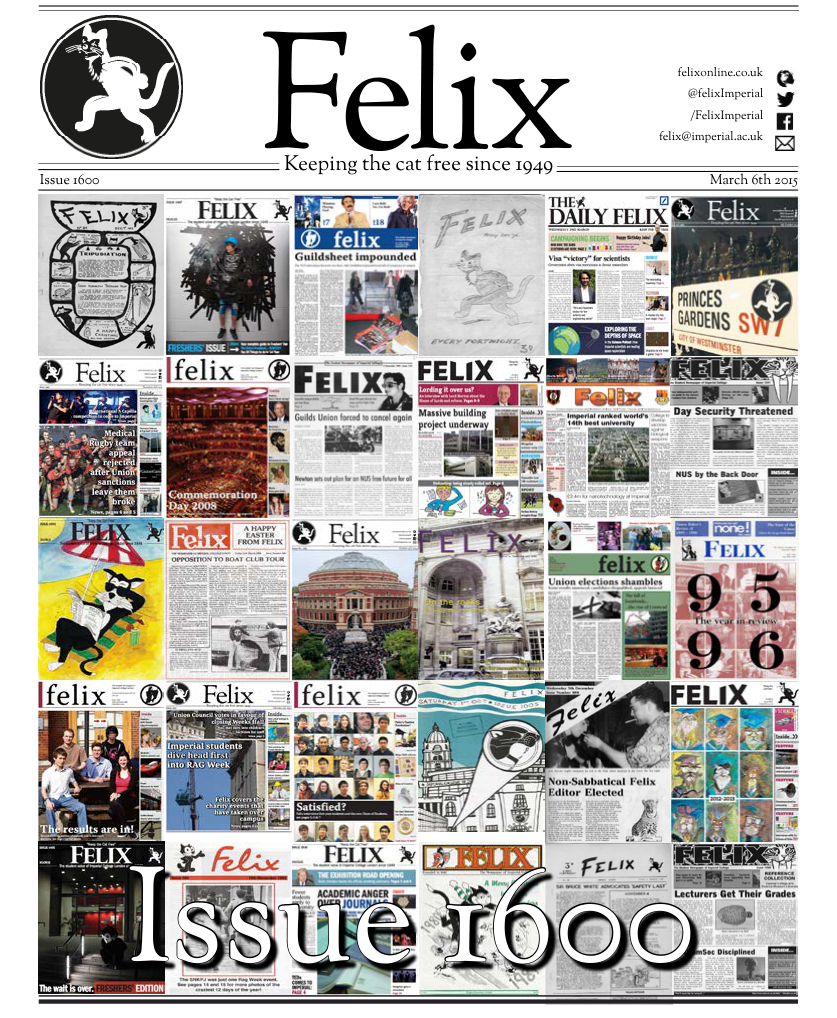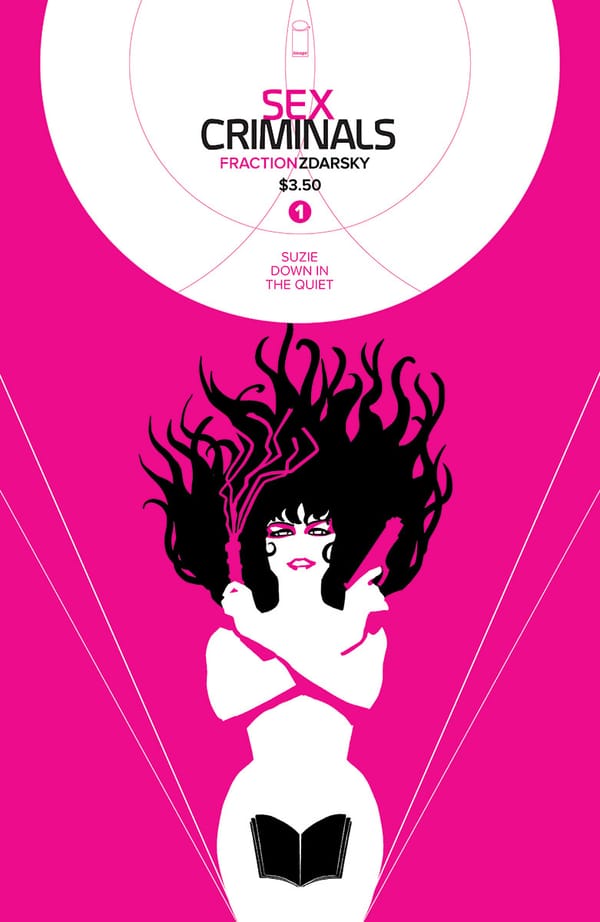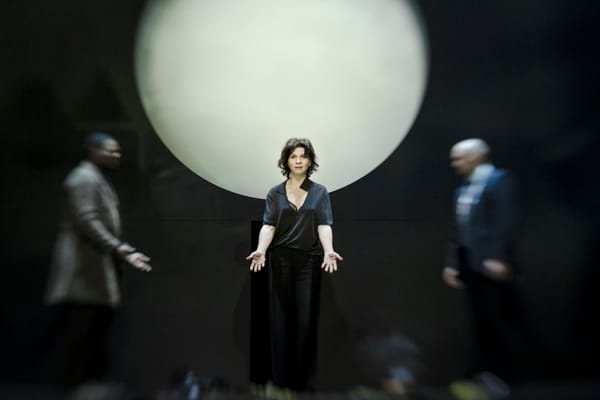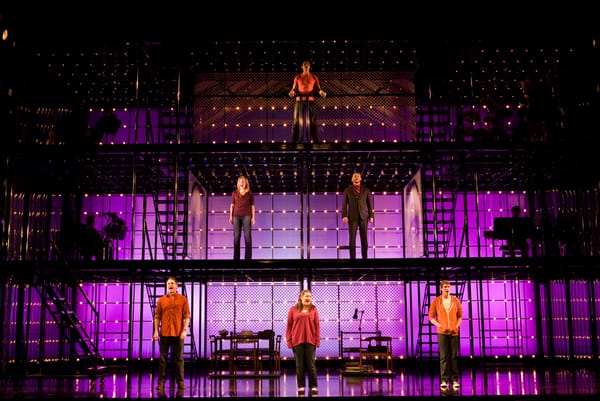Mark Rylance - Long Live The King
Kamil McClelland takes in the Sam Wanamaker Playhouse’s atmosphere
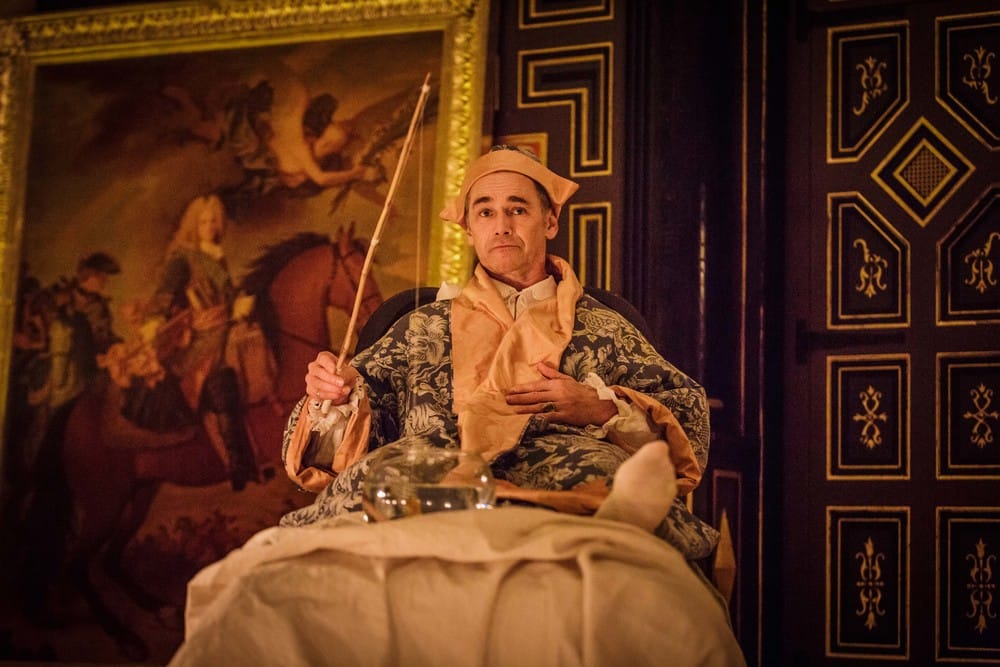
It is easy to forget how magical London is at night but as I crossed Millenium Bridge to reach the Globe Theatre, perfectly perched on the riverside, this feeling rushed back to me. With St. Paul’s Cathedral illuminated behind, I was suspended in a state of wonderment as I entered the Sam Wanamaker Playhouse, the Globe’s new indoor theatre space. Created to extend the working life of the open air theatre beyond sunny summer days, the Sam Wanamaker Playhouse is a truly mesmerising indoor theatre space, built entirely of wood in a late Elizabethan style: intimate, hand painted and lit solely by candlelight; I have never been to a theatre quite like it. However, this did come with a few downsides. It seems there weren’t many people who were 6’ 4” in the 17th century, which made fitting my knees into the cramped rows a bit of a mission. That, combined with uncomfortable benches, reports of dripping candle wax, and poorly positioned columns meant that, although certainly authentic, it wouldn’t be for everyone.
Having said that, it was the perfect venue for Claire van Kampen’s production of Farinelli and the King, a story about fame and the curative power of music. It recounts the tale of Farinelli (Sam Crane), an 18th century castrato, and his relationship with the King Philippe V of Spain (Mark Rylance). Philippe, disabled by his depression and unwillingness to rule, is on the cusp of being kicked out of office by his advisor De la Cuadra (Edward Peel). In desperation, the queen Isabella Farnese (Melody Grove) travels abroad in search of the famed Farinelli, the best singer of the era. Once found, through his voice, Farinelli is able to enliven the king from his depressive slumber, and each of them learns to rely on the other for emotional fulfillment. It is a tale of fame, duty and the therapeutic power of music.
It was my first visit to the Playhouse and it reminded me how much of the artistic experience is lost in large venues, where the personal nature of the art is lost due to your acute awareness of your surroundings: the man coughing two rows back; the lady flapping her programme to the left of you. And to walk in to live harpsichord music, there is truly nothing that compares! This is true of the music interludes that stud the whole play, disguising the scene changes expertly.
Intimate and hand painted, it was the perfect venue for van Kampen’s production
This is in fact van Kampen’s debut as a playwright, although it seems a natural progression of her previous work as a composer and musical director. However, this is no ordinary play, as it’s musical components play an almost equal role to the spoken word, both adding integrally to the progression of the plot. It also just so happens that Rylance, in the title role of King Philippe, is van Kampen’s husband. Although some may argue that this seems a bit iffy, all I can say is that the resulting partnership between them is sublime. Rylance fills van Kampen’s characterisation of the King perfectly: charming, hard-headed, and witty, it may in fact be that their close relationship helped develop the character even more fully.
One simply cannot fault the acting performances in this production. Rylance, behind languid eyes and a deep sadness, is delicate and sensitive in his humour, and you cannot help but empathise with him – an unwilling king shunted into a role he never wished to fill. Crane as Farinelli is equally witty and charming in his sadness, yet has a hardened exterior that comes from the humiliation of his castration and his hollow fame in the limelight. Best of all is the simply phenomenal counter-tenor Iestyn Davies, performing the singing roles of the duality of the Farinelli character. His performances of Handel’s arias, such as the final ‘Lascia ch’io pianga’, are breathtaking. Never have I before looked across at other audience members, grown men amongst them, mouth agape in complete wonderment or eyes glazed over by the haunting beauty of his notes that float through this wooden hall so perfectly. It was a holy experience.
However, this was not simply a case of highly talented actors and singers carrying a poor libretto on their shoulders; van Kampen has created a story full of rich philosophical discussion and oppositions. Through the king, Farinelli is able to largely set aside his stage persona, a self-division visually portrayed by the dual casting of Crane and Davies as Farinelli, both dressed identically but each playing an opposite aspect of his personality.
Grown men, mouth agape in complete wonder at the haunting beauty of his notes
As well as discussing issues such as fame, this play also raises the importance of music in the treatment and alleviation of all kinds of mental illness, from schizophrenia to depression. And just as Farinelli is able to dissolve these feelings of deep-seated misery in the king, making him realise once again the transcendent beauty of art and nature, he is able to do the same in us as his ethereal notes sooth us to our core. And just as Farinelli’s talent, the product of a lifetime of pain, is able to ease the King’s ailments, reciprocally the King provides Farinelli with a worthy audience, not obsessed with societal games, completely divorced from the realities (ironically) of upper class life. The King provides Farinelli with perspective, showing him that his depression and duality is not a unique case, but rather a commonality amongst all people in his position, raised to fame and fortune by factors beyond their control.
And as the chandeliers once again rose up, dimming the candlelit stage in a subtle changing of mood, I was left with the same restorative feeling the King himself experienced, through the music, singing, acting and venue. It was overall an extremely worthwhile theatre experience that I would recommend to anyone else.
Well, as long as they are not as tall as I am!
_Farinelli and the King is on at the Sam Wanamaker Playhouse until 7th March. Tickets start from £10. _

